Using heart rate for training doesn’t have to be complex and can indeed help you learn how to truly run EASY on your easy days to improve endurance. Low Heart Rate training, also know as the Maffetone Method is a system I started following in 2011 and have seen many PR’s for myself and runners we coach as a result.
What if marathon training didn’t leave you feeling like you needed a nap every day of the week?
What if long runs didn’t make you so ravenous you cleaned out the pantry every Sunday?
What if you could get faster and leaner without running yourself ragged?
I’ve seen a number of people post about the Maffetone Method who have never tried it and definitely never coached someone in using it. So please be aware of who is providing the information that’s guiding your training.
Having coached thousands of runners, I actually use a slightly different version simply called Low Heart Rate Training. The main difference is we know better when it comes to fueling with carbs and that we MUST strength train.
What is the Maffetone Method of Training?
Many of you have asked for more details to decide if the Maffetone Method is a good fit for your training. For many of you the answer will be it’s ideal to build your base, for others maybe it’s not the right fit.
In this article I’ll provide you with:
- Overview of how to find your MAF HR
- Understanding how to use this style of training to improve
- Links to MAF training plans
- Answers to common MAF Running questions
The one frustrating thing for many is that Phil Maffetone does not provide a MAF training plan. And hence I actually refer to it more as Low Heart Rate Training…because I have also adapted things I disagree with based on science.
For example, our athletes do NOT follow low carb diets, checkout ideas for what to eat before a run! And we 100% include strength training because there is too much information proving it’s health and running benefits.
So I’ve spent time over the last decade crafting options to help with that as well, but let’s start with the basics.
The abbreviation of MAF actually means Maximum Aerobic Function, but it definitely seems like it’s his name shortened.
What is Training with the Maffetone Method?
- Using the 180 formula to define your max HR
- Doing all workouts below your max MAF Heart Rate until you stop seeing progress
- Once you’ve built your aerobic system with that low-intensity work you can transition to a more 80/20 style
- Doing monthly MAF tests to track progress
I like this process because it helps to develop a better heart rate while running.
Let’s explore each of these more in-depth.
It’s best explained with these statements from Mark Allen, six-time Hawaii Ironman Triathlon Champion:
- It is the heart rate that will enable you to recover day to day from your training.
- It’s the maximum heart rate that will help you burn those last few pounds of fat.
- It is the heart that will build the size of your internal engine so that you have more power to give when you do want to maximize your heart rate in a race situation.
Beyond the running component, Maffetone is focused on whole body health and while his program certainly leads to faster running over time for many his main goal is healthy long term running.
Benefits of Low Heart Rate Training
Long time readers know that in 2011, I began battling health issues that made getting out of bed feel like a 20 mile run. Thus my actual runs felt like someone had piled bricks on my shoulders.
I mean I did them anyways because not running would have made me even crazier.
What I didn’t understand at the time was how cortisol, adrenal fatigue and my heart rate could impact my runs, mood and health.
“In far too many cases, athletes push their bodies in hopes of better competitive performance. However, the benefits typically occur only in the short term, and often at the expense of years of poor health.” Dr Maffetone
I’ll dive in to details on a few of these based on my experiences below, but a quick overview:
- Low heart rate training helps you build a stronger aerobic base (this is your lungs, your legs, your heart, everything)
- Training below your MAF max teaches the body to utilize more fat for fuel, that means needing less sugary gels during your workouts.
- Low heart rate training helps you stop using your watch to determine what is an EASY run
- You begin to learn what EASY should feel like and are less tied to your watch
- Easy runs done correctly improve your recovery
- Doing easy runs correctly allows you to push harder on speed work days
- Doing easy runs correctly prevents injuries and improves running endurance
- It’s an ideal way to train for longer distance races without becoming overtrained by avoiding Zone 3 training
Improved Endurance (Fat Burning)
One of the things that draws many to Maffetone is his claims around improved fat burning. You’ve heard of the myth of a “fat burning zone” in at least one magazine article right?
I think it’s really important to understand exactly what’s happening here.
“The dilemma faced by millions who burn a lot of exercise calories but still have too much body fat is simple: people are burning the wrong calories. We don’t want to just burn calories. We want to burn fat calories. This requires training the metabolism to burn more fat and less sugar all day and night.” Dr. Maffetone
While running, your body ALWAYS uses both fat and carbohydrates for energy. The body slides between these two fuel sources depending on a number of things.
- Duration/Intensity of the workout
- Long term training to teach the body what to use
- Calorie balance {quality vs crap slowing down digestion}
- Overall muscle {how efficient your body is}
- Eating right {what are you giving your body to convert to fuel}
Checkout my own testing with a sports doctor showing exactly how the type of fuel we burn changes with intensity.
As distance runners we want to be better fat burners to prevent hitting the wall and decrease the volume of food we need to consume on the run. But it’s important to know that training in the “fat burning zone” does not mean you are losing more body fat.
It just means at that level of intensity you are burning slightly more fat for fuel than carbs.
Your body stores roughly 2 hours worth of glycogen (what carbs become to be used as fuel), after that you will start to tap in to your fat stores IF you’ve trained your body appropriately.
Otherwise well, welcome to the dreaded wall. Your body NEEDS more quick carbs, non-stop because it doesn’t know how to use any other fuel…this is when you find yourself sucking down packet after packet of gels and then hitting the porta potty.
Drawbacks of the Maffetone Method
The biggest concern, issue, road block for many runners is that in the initial stages (month 1) they often have to slow their pace dramatically to stay within the prescribed heart rate.
A better understanding of the program shows that this proves Maffetone’s point about the need for a stronger base before doing speed.
Initial Training Frustrations
You will have questions and it helps to have a coach in the early stages when you don’t trust the slowdown. Everyone feels like it couldn’t possibly work to run slower to get faster.
But there are a million coaches out there now telling you that’s exactly the point of base phase. And once you have mastered easy miles, then you can begin to incorporate running strides, hill sprints and even tempo runs.
But doing those before full aerobic development is how we often get over trained or injured.
Lack of Strength Training
He has previously made statements against strength training, which I do not agree with and have not found to be accurate. Our athletes all strength train and as a result are less prone to injuries and make MORE progress with low heart rate.
Outdated Diet Recommendations
He also promotes a low carb high fat model of eating, which we also DO NOT promote.
Too many studies show how many hormonal issues are created for women. He has also not studied any of that and is focused more on longevity and male athletes.
Meanwhile, I have worked with numerous Sports Dieititans that do work with athletes of all abilities and agree, we need carbs. It’s part of stress management for the body. So taking them out backfires the whole premise of what we’re doing here.
Maffetone Running Method Overview
The MAF Method (also known as Maximum Aerobic Function) in regards to running is pretty basic, which makes most people assume they’ve missed something. They haven’t.
It’s all detailed very well in The Big Book of Endurance Training.
- No run should be done above your calculated maximum aerobic heart rate
- First mile should be done up to 10 beats per min slower than max
- ALL cardiovascular work should be done at or below this number (until you stop seeing progress)
- MAF test should be performed every 4 weeks to monitor progress (usually 3-5 miles)
- This is NOT training in heart rate zones.
- After plateauing, you can add some speed, but no more than 20% of your workouts
- No grains, sugars, more fat in the diet for better fuel (I do not follow this part)
- No stretching, only structured yoga (I do not follow this part)
Goal of Maffetone Method
Improve speed while maintaining HR which is most efficient for utilizing fat as fuel. Improve total recovery and reduce overall bodily stress.
The reduction in stress hormones was a key feature in making this style of distance training so key for my life. I’ve also found it really helpful as women are running through menopause or through super intense portions of life where cortisol is high.
What is the 180 Formula for Heart Rate?
Follow is how you calculate your aerobic maximum heart rate to utilize for LHR training.
1. 180
2. Subtract your age
3. Adjust number using the following:
-If you do not workout, subtract 5 beats.
-If you workout only 1-2 days a week, subtract 2 or 3 beats.
-If you workout 3-4 times a week keep the number where it is.
-If you workout 5-6 times a week keep the number where it is.
-If you workout 7 or more times a week and have done so for over a year, add 5 beats.
-If you are over 55 or younger than 25, add 5 beats to whatever number you now have.
-If you are under 20 years old, add an additional 5 beats.
It is not training in heart rate zones, this is training at a base low heart rate.
I will say over time, that we have also found adjustments need to be made for our athletes over 60. Just adding the 5 beats from age 55 is often not enough, so that’s something we play with to find the right spot.
Looking for a coach with experience in MAF?
I am a Maffetone Method Coach for many runners {when it’s the right choice!}. Reach out to me here.
👉Or checkout one of these MAF training plans to get you started!
Who Should Use MAF Method?
Is utilizing LHR something that might help you become a better runner?
Here’s a few ways to know the Maffetone Method could benefit you:
- Runners who need to improve aerobic base
- If you, need to learn pacing by effort not just your watch
- Desire to improve fat utilization in running {important for endurance events}
- Constant soreness and aches during training
- Frequently dealing with high sugar cravings during training
- Those with high body or life stress which are already impacting the body
- When you’re consistently not recovering well from training {increased resting HR}
- Runners finding themselves injured repeatedly
- Those experiencing more than normal fatigue every time they increase mileage
If you are someone who enjoys speed workouts or a lot of variety then the MAF method will likely bore you to tears.
However, it might be worth adding to the beginning of a training cycle for base building.
How to Do a MAF Test?
One of the tenants of the MAF training plan for beginners is doing MAF tests to help track your progress in aerobic function.
The MAF test is performed as follows:
1. Warm up 10-15 minutes (keeping at least 10 beats below max HR)
2. Select a 5 mile course which you can use for all tests {3 miles if you run less than 60 min for a long run}
3. Run as close to your target heart rate as you can for the entire test
4. Each mile should be slower than the previous mile (because your HR will go up causing you to need to slow)
5. Always do it on the same day of training at the same time for most accurate results
Your times should consistently improve.
If they get slower during a session that is a sign to back off intensity or total work load in the coming weeks.
SPECIAL ANNOUNCEMENT: Our Online Group Run Club does a deep dive on the Maffetone Method! You’ll be able to ask 11 coaches all your questions, get feedback from other runners and figure out how to make more progress.
MAF Race Pace Predictor
All right so you’ve spent all this time working on your easy pace, how will that translate to race day??
This is based on a chart from The Big Book. So it’s a starting point to help you figure it out.
MAF Test 1st Mile | 5K Race Pace | 5K Race Time | Half Marathon Race Time | Marathon Race Time |
13:00 | 9:00 | 27:57 | 2:09:12 - 2:12:15 | 4:32:29 - 4:39:30 |
12:30 | 8:45 | 27:11 | 2:05:39 - 2:08:37 | 4:25:29 - 4:31:50 |
12:00 | 8:30 | 26:23 | 2:01:57 - 2:04:50 | 4:17:12 - 4:23:50 |
11:30 | 8:15 | 25:37 | 1:58:25 - 2:01:12 | 4:09:44 - 4:16:10 |
11:00 | 8:00 | 24:51 | 1:54:52 - 1:57:35 | 4:02:15 - 4:08:30 |
10:30 | 7:45 | 24:04 | 1:51:15 - 1:53:52 | 3:54:37 - 4:00:40 |
10:00 | 7:30 | 23:18 | 1:47:42 - 1:50:15 | 3:47:09 - 3:53:00 |
9:30 | 7:15 | 22:31 | 1:44:05 - 1:46:32 | 3:39:31 - 3:45:10 |
9:00 | 7:00 | 21:45 | 1:40:32 - 1:42:55 | 3:32:02 - 3:37:30 |
8:30 | 6:45 | 20:58 | 1:36:55 - 1:39:12 | 3:24:24 - 3:29:40 |
8:00 | 6:30 | 20:12 | 1:33:22 - 1:35:35 | 3:16:55 - 3:22:00 |
7:30 | 6:00 | 18:38 | 1:26:08 - 1:28:10 | 3:01:39 - 3:06:20 |
7:00 | 5:30 | 17:05 | 1:18:58 - 1:20:50 | 2:46:32 - 2:50:50 |
6:30 | 5:15 | 16:19 | 1:15:25 - 1:17:12 | 2:39:04 - 2:43:10 |
6:00 | 5:00 | 15:32 | 1:11:48 - 1:13:30 | 2:31:26 - 2:35:20 |
5:45 | 4:45 | 14:45 | 1:08:11 - 1:09:47 | 2:31:26 - 2:35:20 |
5:30 | 4:30 | 13:59 | 1:04:38 - 1:06:10 | 2:16:19 - 2:19:50 |
5:15 | 4:20 | 13:28 | 1:02:15 - 1:03:43 | 2:11:17 - 2:14:40 |
5:00 | 4:15 | 13:12 | 1:01:01 - 1:02:27 | 2:08:41 - 2:12:00 |
What about Speed Work with MAF Method Running?
Get faster without hitting the track!
Sounds impossible, but it’s not. And thank GAWD because I love all things running except wanting to hurl while running 400 repeats.
Not only have I seen it in myself, but those I coach. I do think this is a hard method to go alone because you can have so many questions, especially the up front concerns about feeling slow.
How does LHR work?
By forcing yourself to slow down and do all of these runs at your low heart rate, you build a solid aerobic base.The majority of runners dive in to plans with speed workouts, cross training, and long runs without truly creating a solid base.
Once your body has a solid aerobic base:
- it begins relying on fat for fuel
- you are able to run faster at that low heart rate
- less energy is required to run, which allows you to go farther.
Can I do any speed work in the Maffetone Method?
Maybe.
Initially the answer is 100% no, you need to follow the LHR.
After 4-6 weeks if you’re healthy and in good shape, you might find you’ve made significant progress and are feeling plateaued, so a coach could help you put in 1 workout a week for a few weeks with speed. Then you’ll go back to MAF for a bit and gauge the effects.
Another option is hoping on a treadmill and setting it to a negative incline to practice a faster turn over while keeping your HR down.
But LONG TERM, yes you should be shifting to 90/10 or 80/20, easy to hard workouts.
So, just slow down that’s it?
No there are other things you can do which will improve your speed before you ever set food on track:
- Learn how to breath when running {more oxygen is super helpful!}
- Reduce total life stress to reduce cortisol {meditate, yoga, rest days}
- Eat more greens, healthy sports nutrition fuel and less highly processed food
- Reduce inflammation
- Improve the basics of your running form
- Strengthen your hips
- Consistency works better than anything else, stay injury free with key PT moves
Common MAF Running Questions
Does running at altitude change my LHR?
No. Dang it. I really wish it did.
But instead you, as I am now, will have to just slow down. Overtime again the body will become stronger and adapt…then that sea level running will be awesome.
Is there a specific MAF training plan?
Not from him. The plan is run under your HR, which is why again I recommend working with a coach. They can help you figure out the appropriate mileage and how to adjust things during training as you progress.
I have created an entire Low Heart Rate course with multiple plans to help you through the process >>
What about the reduced fatigued?
For me this was one of the biggest benefits! I couldn’t believe that I made it through multiple marathon training cycles in Florida, while going through early menopause apparently without feeling that crazy fatigue!
By keeping all workouts below my max LHR, I was able to consistently keep coritisol down, while feeling stronger. I also quite simply enjoyed my workouts a lot more.
Do I follow MAF on race day?
No on race day, you let it rip!
All that base training will allow you to push yourself without redlining. However because you are pushing past your LHR, be prepared to fuel with some carbs. During most long runs, you might find you need nothing, but on race day a little can help.
In essence, there is a HR at which your body switches from burning fat to burning carbs.
Something like the VO2 Max test can tell you this, but for ease of use it’s your Max Maffetone HR from the 180 method.
What HR monitor do you use?
I have tried a ton of them and did a full post of the best heart rate monitors for runners.
How does weather effect low heart rate training?
Running in the hot, humid summer running will push your heart rate higher much quicker. Give yourself plenty of time in the warm up phase and just be willing to slow down. These runs will still lead to Fall PR’s when done correctly.
How long does it take to see results with MAF running?
How deep is the hole of over training or injury you’ve created? If you’ve been pushing too hard and eating poorly for a long time it could take easily 3-6 months. You will likely continue to see progression long after that as well.
If you’ve been doing most things right and feeling good, you might actually see your times improve within just a month or two of following MAF.
Other ways to connect with Amanda
Instagram Daily Fun: RunToTheFinish
Facebook Community Chatter: RunToTheFinish
Sign Up to Receive a Weekly Newsletter with Top Running Tips
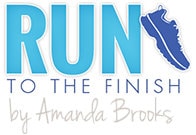
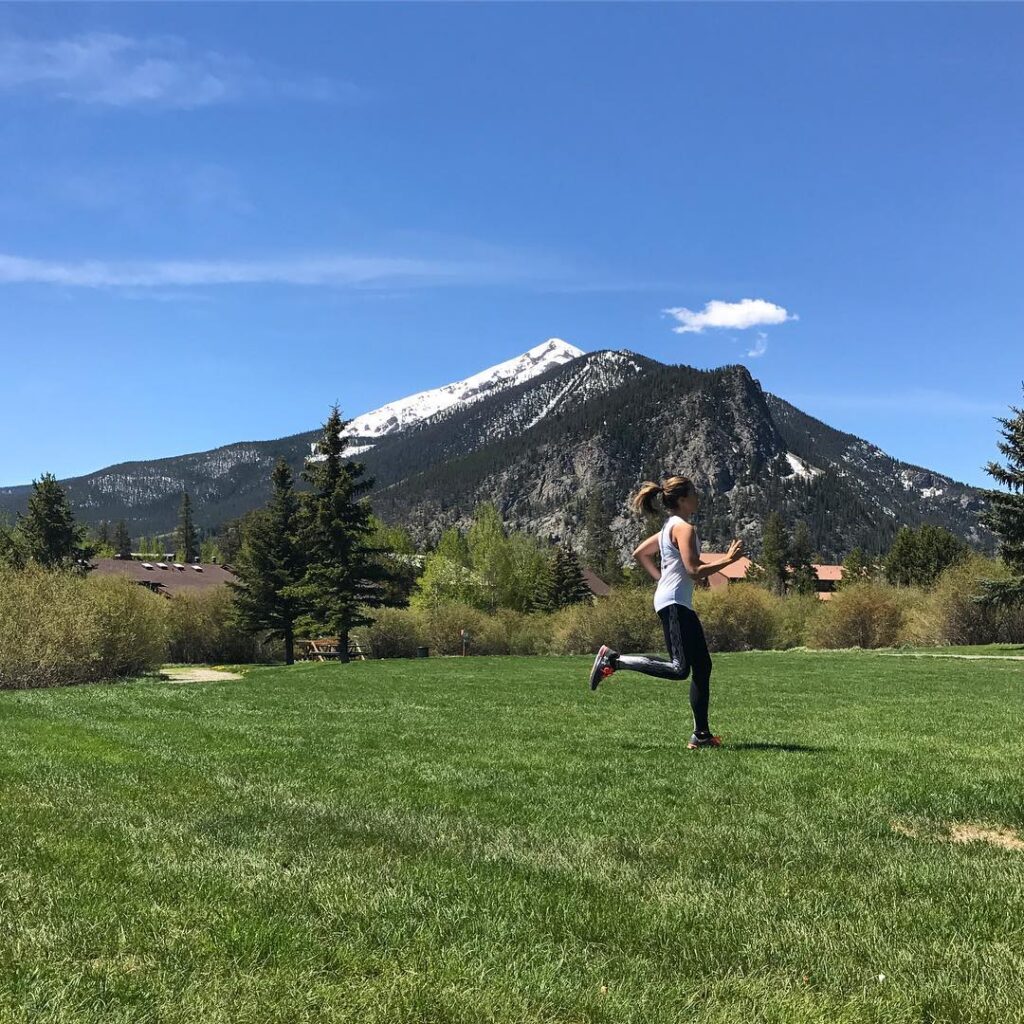
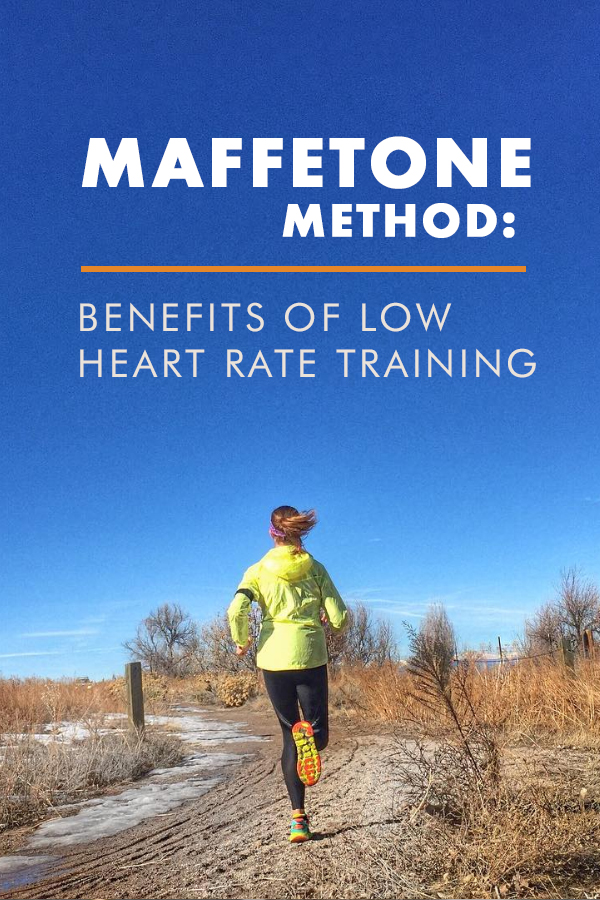

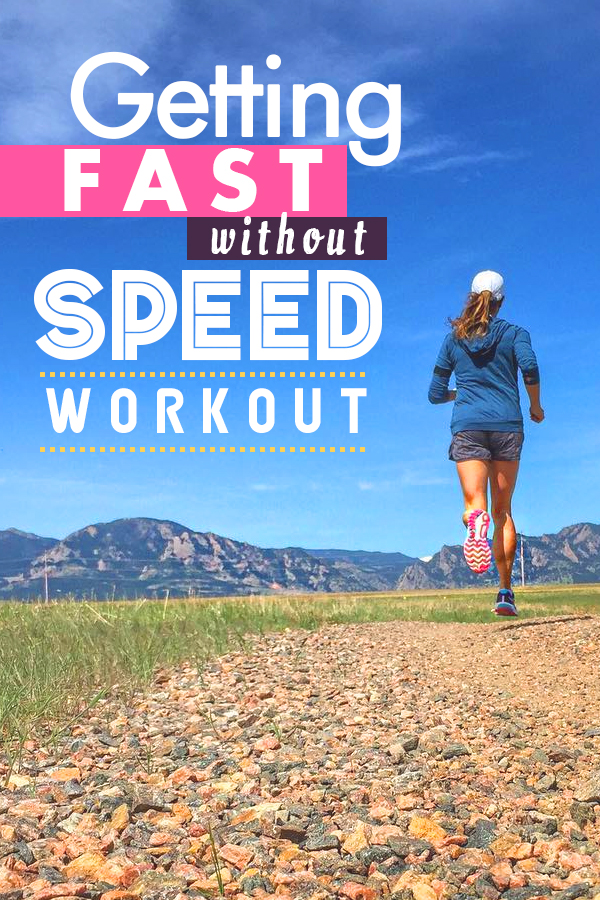
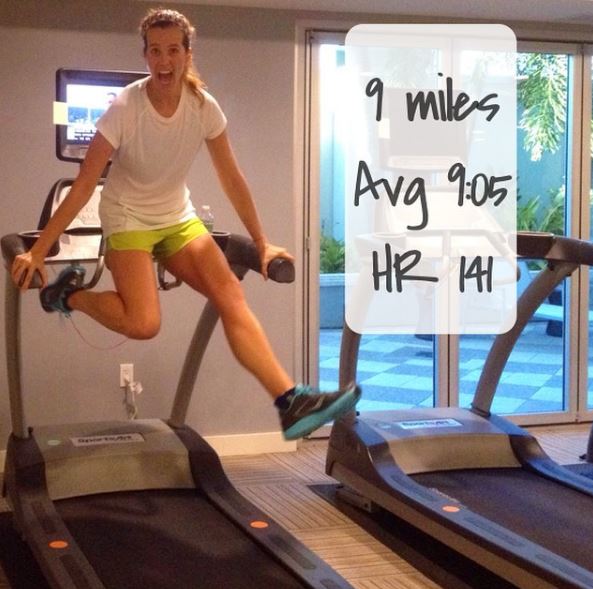

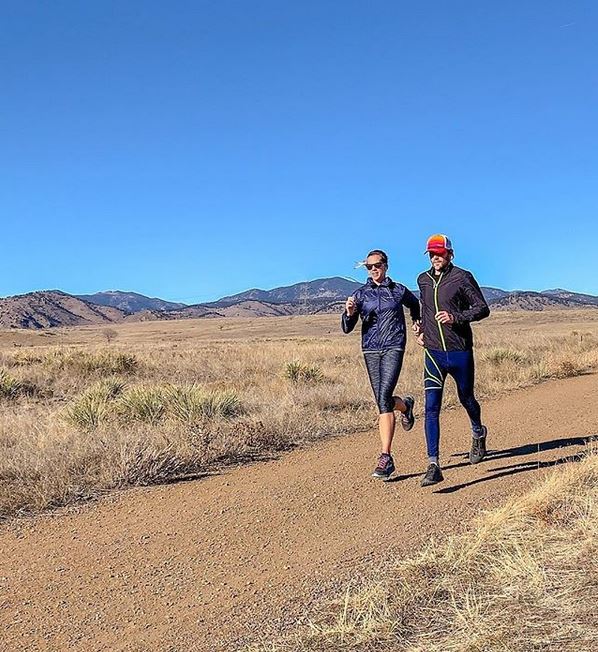 Complete Guide to Men’s Running Tights: Our Top Picks
Complete Guide to Men’s Running Tights: Our Top Picks
Raul
I understand the Maff Method, now how do you figure out your weekly mileage for marathon training?
Alina
Hi,
What so you mean by “structured yoga”?
Thank you.
Chris
So, this removes gels and sugary drinks from your run nutrition. What exactly do you eat and drink during a training run or race then?
Mimi
Fats! I have a blended liquid consisting of raspberries, MCT oil, a tiny bit of malt rice syrup and water for +2hr runs or else I make my own jelly cubes with the same mixture but adding gelatin so that I have a solid form that’s easier to “ingest”